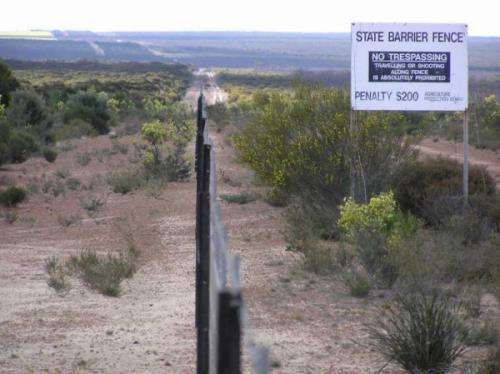Thousands predicted to die along state barrier fence

Ongoing research across South-West WA is examining the impacts of upgrading and extending the state barrier fence.
Erected in 1902, the state barrier fence was originally intended to protect WA's agricultural land from rabbits, dingoes and the migratory movements of emus and kangaroos, once considered pests.
The state government is currently considering a proposal to extend the barrier fence by 650km, effectively closing off south-west WA from the rest of the state.
Deakin University researcher Euan Ritchie says the state barrier fence has had a questionable impact on controlling pest species historically, and extending it would likely cause more harm than good.
"The south-west of WA is a global biodiversity hotspot," he says.
"The costs associated with the creation of a permanent barrier between the south-west of WA and more inland, and arid, Western Australia are not just economic.
"Australian's don't really have a good understanding that we do have large movements of animals.
"Occasionally, drought is really bad and animals like emus in particular move really large distances. The problem that then occurs is they come up against this barrier and they can't go any further."
Effect on animal welfare
Mr Ritchie says it's particularly hard to quantify the impact of moving the state barrier fence on animal welfare.
"There is anecdotal evidence from people who maintain the state barrier fence that large numbers of animals are dying along the fence lines," he says.
"The south-west of WA is typically much wetter than inland WA, and thousands of animals are predicted to die along the fence lines each year trying to access more fertile habitats, particularly during major droughts."
Mr Ritchie says it's a given that graziers and pastoralists in the south-west should want their livestock and crops protected, but there are more effective and humane solutions available.
"The south-west dingo fence hasn't at all stopped dingoes, just as historically, the rabbit-proof fence never stopped the movement of rabbits," he says.
"There's also relatively poor data on stock loss as a result of dingo attack, so it's hard to weigh up precisely the cost and benefits of having a fence.
"Looking at the impact a barrier fence has on animal welfare, increasing pest and animal numbers on the inside of the fence versus some of its potential benefits, one has to question why we keep investing in solutions that don't work all that well."
Provided by Science Network WA



















